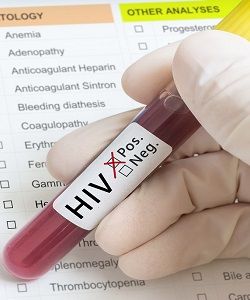NYC Shows the Importance of HIV, Hepatitis C Screenings in the ER
HIV, hepatitis C coinfections weren't all that uncommon at a Bronx ER.

One of the biggest problems standing in the way of reducing HIV and hepatitis C (HCV) infections is that patients don’t even know they’re infected. Lucia V. Torian, PhD, of the New York City Department of Health and Mental Hygiene, and colleagues to set out find just how many people presenting to a busy NYC emergency room (ER) are unaware of their status.
Presented at the Conference on Retroviruses and Opportunistic Infections (CROI 2017) in Seattle, Washington, the team gathered data from remnant serum of patients who went to the Bronx ER from March 8, 2015 to May 8, 2015.
Blood was drawn from 63% of ER presenters, which is unusually high, according to the researchers. The study was blinded, so participants did not give consent in order to avoid patients’ bias due to perceived risk. All patient identifiers were permanently removed from the database.
“The first consecutive 5,004 specimens appearing to have sufficient remnant serum to complete the two- or three-step testing algorithm for HIV or HCV were selected and transferred to the laboratory,” Torian and team explained.
HIV diagnoses were screened using the fourth generation combination Antigen-Antibody immunoassay (Architect HIV Ag/Ab Combo) and confirmed with the second generation rapid HIV-1/HIV-2 differentiation assay (BioRad Multispot HIV-1/HIV-2 Rapid Test). The Vitros Anti-HCV ImmunodiagnosticTest screened for HCV with a reactive result being signal-to-cutoff ratio of > 1.0. Infection was confirmed with the HCV RNA Polymerase Chain Reaction (PCR), a positive result being > 15 copies of HCV RNA/mL.

Out of the 4,990 completed tests for HIV, 308 patients were repeatedly reactive on screening. Two hundred and forty-eight patients were reactive with supplemental testing and two patients had antibody-negative/RNA positive acute HIV infections—bringing the total to 250 HIV-positive ER visitors (5%). However, only 12 were actually undiagnosed (seven males, five females). Seven of the undiagnosed patients were ages 40 to 59.
The researchers found anti-HCV antibody in 372 of 4,989 participants (7.5%) with completed results. The confirmatory test showed HCV RNA positive in 196 individuals—38 of which (19.2%) of which were undiagnosed.
There was also a substantial number of coinfections in the cohort. Of HIV-positive individuals, 32% had anti-HCV antibody; 21% who were anti-HCV positive had HIV. In addition, 16% of those with HIV were HCV RNA positive; 19% of HCV RNA positive also had HIV.
The prevalence of HIV and the number of undiagnosed cases were actually the lowest in the history of serosurveys conducted in NYC ERs. HCV prevalence and undiagnosed cases, however, were higher in this serosurvey than what officials estimated citywide. Perhaps not so surprisingly was that baby boomers had the highest HCV prevalence in the study. Age clusters 40 to 59 and 70 to 89 also had high rates.
This study shows undiagnosed patients on a localized scale, but the Centers for Disease Control and Prevention (CDC) estimates that 13% of people with HIV and 50% of people with hepatitis C worldwide aren’t aware of their positive status.